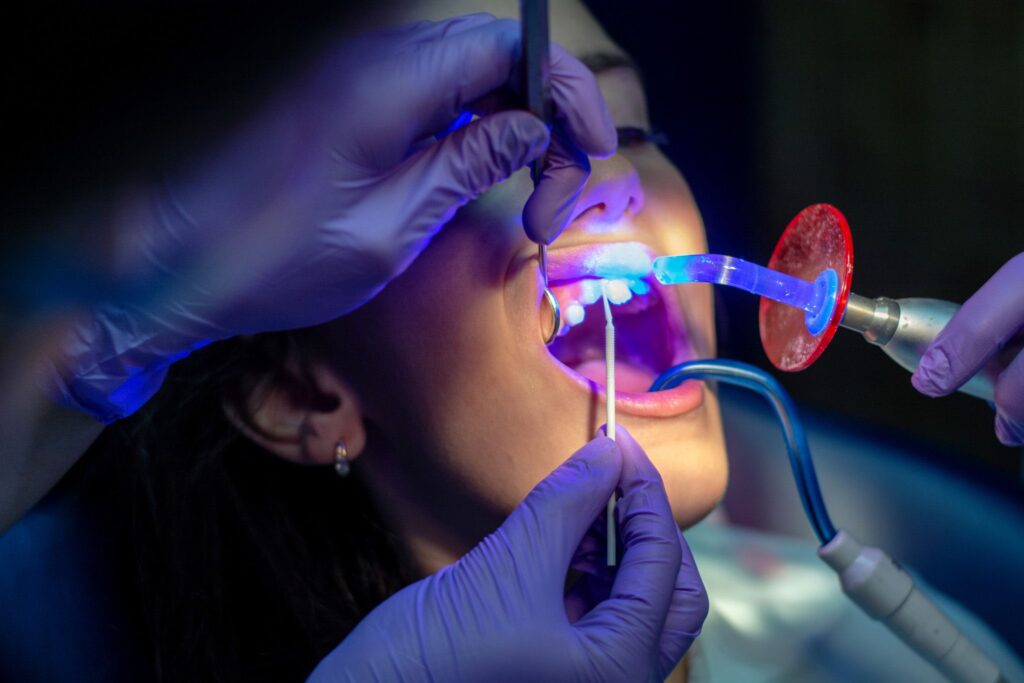Gum health is just as important as having cavity-free teeth. One of the most common issues that can affect your gums is gum disease. Fortunately, advancements in dental technology have given dentists a powerful tool to combat gum disease effectively: lasers. Lasers can provide you with a much better experience when fighting gum disease.

Gum Disease
Gum disease begins with the buildup of plaque–a sticky film of bacteria–on your teeth. If not removed through regular brushing and flossing, this plaque can harden into tartar. Unfortunately, tartar is much more challenging to get rid of.
As tartar builds up along the gumline, it can lead to inflammation, bleeding, and tenderness. These are also early signs of gum disease (gingivitis). If left untreated, gingivitis can progress into periodontitis. This is a more severe form of gum disease that can result in tooth loss. Over time, it can even impact your overall health.
Why Dentists Choose Lasers
Traditional methods of gum disease treatment involve scaling and root planing, which are effective. But, it can be uncomfortable for patients. Dentists have embraced lasers as another approach for several reasons.
First of all, laser gum disease treatment is less invasive than other methods. It requires less cutting and stitching. This means less discomfort for patients and quicker recovery times. Furthermore, this can lead to less pain for patients. Patients often report less pain and discomfort with laser treatments.
Additionally, lasers allow dentists to target and remove infected tissue with great precision. This accuracy helps preserve healthy gum tissue. As a result, patients can expect fewer complications with treatment.
Laser energy cauterizes blood vessels and disinfects the treatment area. This results in less bleeding and swelling during and after the procedure.
How Lasers Work
Laser gum disease treatment involves the use of a dental laser to remove infected gum tissue and tartar buildup. It also promotes gum reattachment to the tooth surface.
At the beginning of your process, your dentist will assess the extent of your gum disease using diagnostic tools and X-rays. This helps determine the right plan.
Before the procedure begins, your dentist will give local anesthesia to ensure you are comfortable during the treatment. Then, the dentist uses the dental laser to target and get rid of the infected gum tissue and tartar buildup. Once they remove the infected tissue, the laser will help the growth of new, healthy gum tissue.
After, your dentist will provide ways to ensure proper healing. This typically involves gentle oral hygiene practices and follow-up exams to see your progress.
Benefits of Lasers
Laser gum disease treatment offers several benefits that make it a good option for patients. Patients often have quicker recovery times than other gum surgery. Furthermore, lasers have less pain and discomfort during and after the procedure.
Lasers also preserve more healthy tissues than other ways. Your dentist doesn’t have to cut into healthy tissue with lasers. Finally, lasers can improve gum health, reducing the risk of future gum disease issues.
